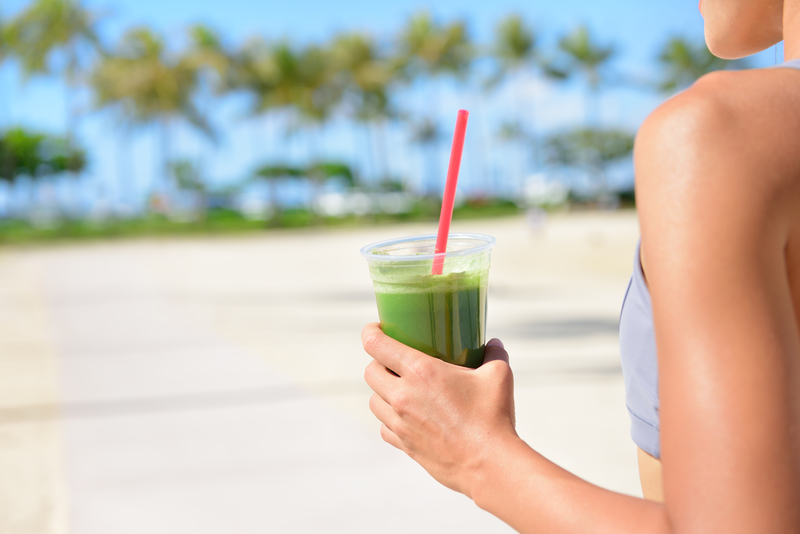Youthful Longevity
Ageing with GraceYouthful Longevity
Ageing gracefully is an ‘art’. In world where stress, poor food choices and toxins run high, it’s no wonder so many of us turn to cosmetics and other products which contain potentially harmful chemicals, as we seek out the fountain of youth. But what if there was a way to age naturally, with grace and elegance without slathering our bodies in creams and chemicals? Fortunately there is! There are methods which may be undertaken to achieve a balanced and youthful life. Regardless of your age or your current health, these methods can be utilized to capture and maintain youthful longevity. Youthful longevity is the key to living gracefully into advanced years, and we show you some of the ways you can build a better foundation for your future.

Eating for Youthful Longevity

Exercise
Exercise is one of the most critical components to staying healthy and youthful. Sedentary lifestyles produce mediocre bodies, and fast-forward the ageing process. To achieve greater health and feel your best, exercise is a must. Of course, there are virtually thousands of ways to exercise but each one of us have different needs and health concerns. How you choose to exercise isn’t as important as simply being active. In other words, whether you choose to run 5 miles every morning or shoot for a quick 20 minute walk around the neighborhood, as long as you are moving you can attain physical fitness. Physical fitness is important but some can overlook the importance of strength and flexibility. Here are a few helpful tips for proper exercise no matter what condition your body is in right now.
1. Go for a walk.
Experts recommend up to 45 minutes of brisk exercise every day. Going for a walk is one of the best ways to achieve some form of exercise every single day. Make it your goal to walk around 4 miles per hour which will help you cover roughly 1 mile every 15 minutes, or around 3 miles for a 45 minute walk. That’s enough to have you breathing deeply and maybe even breaking a sweat.
2. Practice Yoga
Yoga has many anti ageing benefits, from helping to keep you physically fit, to helping relax the mind and washing away feelings of stress and anxiety. With our busy lifestyles, it is common for people to forget to take a little bit of time out for themselves to de-stress and recuperate after a hard day of work, and yoga has the potential to achieve this. Yoga is a low-impact exercise and therefore can be done by people of all physical levels and of all ages. It helps to improve your balance, flexibility and strength thereby gradually slowing the ageing process. As we get older we experience pains and aches all throughout our bodies, in particular our joints and muscles. These problems can be targeted by incorporating yoga into our daily lives. It helps to ease the feeling of stiffness in our arms and legs, hips and shoulder, through gentle poses helping to improve our flexibility. Balance is a very important component of health as we age, as the elderly are at a higher risk of having falls. Practising yoga can help to minimise this risk by exposing our bodies to different balancing poses and in turn, strengthening the muscles involved in keeping us upright. Yoga is also be very beneficial in helping to encourage good posture. Yoga is helps our bodies to strengthen slowly over time and does not put excess stress on our bodies as all the movements and poses are gentle and slow. One of the most important techniques in yoga is regulating your breathing. Proper breathing has many benefits and the importance of your breathing is commonly overlooked by those embarking on a fitness program. Yoga promotes then inhalation of deep breaths, increasing the amount of air that you take up into your lungs, allowing more oxygen to nourish our cells. This is particularly important as we get older. Proper breathing can also help to relax the body and release tension as slow, large breaths can help slow down the mind and the body. This is important in relieving the body of stress as well as helping to make you feel and look younger and more energised. For more information on Yoga and some suggested poses, please see our Yoga pages.
3. Practice Pilates
Pilates was originally created in order to improve the posture and flexibility of dancers and performers however over time pilates began to prove itself a great anti-ageing exercise. This form of exercise is gentle physical activity therefore can be taken up by people of all ages. Pilates can accommodate every fitness level. The best thing about it is that it can be done anywhere and at anytime, whether that be in a class led by an instructor or in the comfort of your own home. Pilates involves building the body’s core strength by practising proper breathing techniques, through stretching and through balance. All of these components assists in combating the ageing process as it helps you to feel younger, more vitalised and reduce the feeling of stiffness which becomes common as we age. Stress is also a major factor in the ageing process and can speed it up rapidly. Pilates has the ability to help relieve the feelings of stress and tension in the body as well as the mind. By focusing on the pilates positions during a session, and by being mindful of your breathing, it paves the way for your mind to reach a state of tranquility and peace and the stress just melts away. Overall, pilates is a great way to build up your body’s strength, flexibility and balance through non-strenuous physical activity as well as helping to relieve stress. It is due to this that pilates has become recognized as a great anti-ageing practice.
4. Strength Training
Strength training is a great method of developing definition and helping to sculpt your body into a great shape but it is also a powerful way to slow down the ageing process. It involves the maintenance and promotion of muscle strength, which is especially important as we age. Not only does it build your strength but also helps to maintain a healthy weight which is a major factor in the ageing process. Up until around the age of thirty, our bodies and muscles are continually growing. Past this time point however the ability for our cells to divide begins to slow down. A muscle wasting condition that older people are at risk of developing is sarcopenia, which is the decrease in skeletal muscle mass resulting in frailty and weakness. The speed at which our bodies age and the progression of sarcopenia can be slowed by eating healthy protein, necessary for muscle growth, and by participating in regular strength training. This is why this form of training is so important. Strength training has the ability to use up the body’s glucose therefore normalising blood glucose levels in the body assisting with the maintenance of heart health. It is also great for promoting bone health. You don’t need to use heavy weights. Light weights or even your body weight is fine.
5. Rebounding
Rebounding a fun and simple exercise which can help to slow down the ageing process due to its great health benefits. It is an easy exercise suited to people of all ages, which requires simply bouncing on a trampoline and even just five minutes of this a day can be beneficial. Not only does it promote physical activity and burning the body’s fat stores but it can also build up your muscle strength, promote bone health, help relieve body pains and feelings of stiffness in the arms, legs and joints through light physical movement, help you feel energized and also decreasing feelings of stress and anxiety. The way that rebounding can achieve its health benefits is due to it being able to help the flow of lymph through the lymphatic system. The lymphatic system is the cleansing system of the body, ridding it from toxins. This exercise stimulates the lymph system due to one of the same principles of inversion. Rebounding works against gravity which is an ageing force and helps blood to flow in the opposite direction. It helps to relieve the pressure on the body caused by gravity resulting in all of its health benefits.
6. Inversion Therapy Inversion is a method that has become known to produce anti-ageing properties. It involves physically doing what the name suggests, which is to be upside down. Inversion therapy aims to fight the ageing process by acting against the force of gravity which is partly responsible for sagging skin. The force of gravity is constantly acting on your body and forcing it down however by inverting yourself you are able to produce an opposite effect of what your body is used to, thereby producing its anti-ageing effects. Holding yourself up while being upside down can be a hard feat for most therefore inversion tables are available to assist you. This has become helpful as people of all ages are able to be involved in inversion therapy. An alternative to an inversion table is to simply sit with your legs up a wall. This has a similar effect as the blood is brought towards the heart. The benefit of inversion therapy is that the blood moves more towards the upper half of the body, nourishing the cells of areas including the brain, face and scalp. This is advantageous as gravity normally drains blood towards the legs and by being inverted, the blood can move freely to other areas. Inversion therapy can also help to stretch muscles and in particular the spine. In the normal upright position, gravity pulls the vertebrae in your spine downwards therefore there is a constant pressure in the areas where they touch. Inversion therapy will have the opposite effect, stretching the spine and relieving this pressure. This helps you to feel more relaxed and less tense, consequently having a positive impact on your mental health also and slowing the ageing process. For more information on inversion therapy click here!

The Importance of a Detox

Supplements for Youthful Longevity


